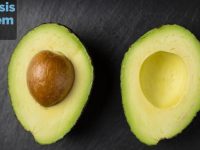Climbing is more popular than ever, and parents who climb are often eager to pass their beloved sport on to their children. Blessed with the many more recent innovations of climbing such as gyms, teams, and dedicated training, these children as setting new limits for what is possible.
There is therefore little doubt that children are just as capable as adults on the wall—but it’s important to remember that we’re still dealing with children, and that those children have different nutritional needs than adults. When these needs are not met, or when the right eating behaviors are not frequently modeled and encouraged, the result can be both physical and emotional harm.
This series of articles is aimed primarily at the parents of climbers aged between 3 and 18, though teens interested in sports nutrition may find some of the content illuminating as well. In this first part, I’ll cover the major components of a child’s diet, including caloric goals and macronutrient needs as well as hydration and determining your child’s height/weight status. In later parts, I’ll address micronutrient needs, supplements (and the appropriateness thereof), and address some common questions in general pediatric nutrition—speaking of which, if you have a question about nutrition for children, please email me so I can add it to the list!
Now, let’s move on to raising a healthy, strong, and happy climber!
First: What’s an Appropriate Weight?
Parents do not always know what is an appropriate weight for their child. Since children grow fast and can differ greatly in their height to weight ratio, it can be challenging to even recognize whether a particular weight is appropriate for a child’s height.
Most notably, an estimated 50% of parents whose children are obese or overweight underestimate their child’s weight status—in other words, half the parents with obese or overweight children think their child is a healthy weight. But 14% of parents with children of a healthy weight thought their child was underweight, which goes to show that perception problems abound.
Thankfully, we can ditch a notoriously unreliable perception of weight for a much more accurate scientific standard: the BMI. Measuring a child’s BMI works the same as measuring an adult’s (weight in kilograms divided by the square of height in meters), but is interpreted much differently. Whereas an adult is considered underweight below a BMI of 18.5 and overweight with a BMI of 25 or above, the BMI of a child must be compared to a chart.
The CDC offers both a calculator to determine your child’s BMI as well as growth charts for both boys and girls—these growth charts are used all the way to age 20! To read the chart, you match your child’s age with their BMI and find out which percentile they’re in. Anything between the 5th and the 85th percentile is considered to be a healthy weight. Under the 5th percentile is underweight, the 85th to 95th percentile is overweight, and the 95th percentile and above is obese.
As the term “healthy weight” implies, anything outside the range of healthy is unhealthy. Today, our society faces an unprecedented problem with over 33% of all children being classified as overweight or obese—but arguably a larger problem for children in the climbing community is the prevalence of underweight status.
Climbing is a weight-conscious sport, and beginning in the pre-teens both girls and boys can start to feel pressure to be “lean” and subsequently develop an unhealthy relationship with their weight and dietary habits—this is particularly true if they are competitive or performance-focused. The result is often disordered eating, which can lead to underweight status and even to eating disorders.
I want to be extremely clear here, especially to any readers—of any age—who may feel that their weight is affecting their performance: there is no advantage to being underweight compared to a healthy weight, and many disadvantages. Being underweight carries a host of healthy problems from increased susceptibility to illness to decreased energy and power to hormonal impairments and reduced recovery. All of these issues actively decrease your strength, power, energy, and total athletic ability. If you are in the “healthy weight” range, you do yourself no favors by trying to lose weight.
Furthermore, striving to maintain or even lose weight when actively growing can delay or permanently stunt both growth and muscular development, harming your future potential as an athlete! Inadequate energy intake can lead to reduced height, less accretion of lean muscle mass (the sort that pulls you up the wall), and increased fatigue. These are not positive traits for talented athletes of any variety, let alone climbers!
When we look at the actual BMIs of world-class climbers—the ones competing in world cups—BMI is not as low as you may suspect. Male athletes have an average BMI of 22 whereas females have an average BMI of 20.4. That means world class climbers typically have a BMI that falls in the 30th to 60th percentile for weight (i.e., completely average), or nowhere even close to underweight status. Clearly, there are far more important factors when it comes to being the best climber your child (or you!) can be.
So it’s important to be aware of your child’s BMI and their BMI-to-age percentile, and you should also keep track of changes—but please monitor their weight passively, not actively, because it’s equally important (if not more so) for your child to not feel as if you are judging them for their weight. By monitoring their weight, you can be proactive about potential problems, such as rapid increases or decreases in percentile that can indicate that your child’s eating patterns have changed. If such a change is discovered, you should discuss it with your doctor first.
Determining Caloric Needs
After you’ve determined whether or not your child is at a healthy weight, the next step is to understand their caloric needs. For the most part, this is actually a hands-off exercise because A) children (especially young children) are inherently good at self-regulating their own food needs and B) controlling a child’s food intake can lead to disinhibition of their innate hunger and satiety signals and lead towards disordered eating patterns.
Current guidelines suggest that you neither encourage your child to eat a certain amount (e.g., asking them to finish their plate) nor limit their access to food (e.g., don’t allow seconds or restrict snacks). Both types of behavior teach children that their internal cues are unreliable, and that external cues such as serving size are more important. Both can also cause food issues down the road.
Regardless, at around age 5 children will start to pay more attention to external cues as well—including the size of their portions, the foods their parents and peers choose to eat (and in what proportions), and verbal/visual mismatches such as hearing a parent declare “I’m full” but then seeing them eat dessert. The latter two are examples of why it’s important to model good eating habits; if you want your child to eat more vegetables, the best way is to eat more vegetables in front of them! As for portion sizes, let your children serve themselves—they are less likely to overserve themselves, and if they’re still hungry after their first helping they will serve themselves more (provided you let them!).
Many parents fear their children don’t eat enough and encourage them to eat more, but it’s an unfounded worry—provided children have access to sufficient food and food of sufficient caloric-density, they will eat enough to support healthy growth. Keep in mind that such food must be available, however, as is highlighted by the following anecdote:
In my hometown of Boulder, a friend recently told me that his very active 10-year-old son was complaining of always being sore. My friend and his family eat very healthfully by most standards—meals consist largely of non-starchy vegetables and smaller amounts of lean meats, legumes, and healthy fats—and through the lens of his health conscientiousness, his worry was that his son was somehow still not getting enough antioxidants to reduce or prevent muscle soreness. From my perspective, however, this was clearly not the problem; rather, his son was simply not getting enough calories to fuel the exercise he was constantly engaged in!
If you were to guess the caloric needs of a “very active” 10-year-old, what would you choose? Keep in mind that 10-year-olds typically range 50-58 in (127-147 cm) in height and 51-92 lbs (23-42 kg) in weight, and that “very active” means getting an average of an hour or more of structured exercise (like climbing or soccer) every day. If it helps, you can also consider that an active adult male who is 70 in tall and weighs 155 lbs needs approximately 2,300-2,600 calories per day.
…
Did you make a guess? Was it 2,000 to 3,000 calories per day, depending on the 10-year-old boy’s actual height and weight (not to mention total activity level)? Yes, that’s an accurate figure—the average 10-year-old boy who exercises an hour or more each day has similar caloric needs as a fully-grown active man over twice his weight! Now imagine getting that many calories per day with the stomach the size of a 10-year-old’s and it’s easy to understand why calorie-dense foods are necessary.
Yes, non-starchy vegetables should be in your child’s diet, as should any other healthy foods you choose to include in your own diet, but if your child is as active as many climber’s children are, then they also need access to food that is sufficiently calorie-dense to meet their needs. That means including ample access to concentrated sources of calories—such as grains, legumes, starchy vegetables, nuts and seeds, and fruits—with every snack and meal.
You can check your own child’s caloric needs with this calculator from the Baylor School of Medicine. You might be surprised by how many calories your child needs, particularly if they’re a typically “very active” young climber! And while this tool is not to encourage you to start weighing your child’s portions or otherwise attempting to control their intake (let them do it!), I hope it does shed light on how important it is to let your child get all the calories their body tells them they need.
Getting Enough Protein
So far we’ve addressed topics that can be calculated and accounted for. There is an appropriate range of weights for any height, easily determined by use of a BMI calculator and growth charts. It’s fully possible to calculate your child’s caloric needs, as well, as long as you know their weight and activity level. The topics we move onto now—the macronutrients—are less simpy calculated. We’ll start with protein.
If you’ve read my series on protein, you know I recommend getting about 20 grams of protein about every three hours for a total intake of around 120 grams per day. This is enough protein to maximally stimulate protein synthesis in an adult, but we have literally zero data for children (the youngest research subjects in this area are about 20 years old). Is this scientifically frustrating? Yes. Does this mean we should throw our hands up in despair? No.
For one, children do not have a significant ability to grow muscle (like an adult) until after puberty, so there’s unlikely to be any benefit to trying to maximize muscle protein synthesis. For a second, children before their teen years have very low absolute protein needs: for children aged 1-3, it’s 13 grams per day; for children aged 4-8, it’s 19 grams per day; for children aged 9-13, it’s 34 grams per day. So long as your child’s diet includes protein-rich foods, it’s all-but-guaranteed they’ll meet their needs.
Furthermore, timing does not matter for a younger child in the same way it matters to an adult (and likely a teen who is interested in muscular development). Muscles benefit from frequent “doses” of protein because they have a refractory period where they cease to respond to more protein, but that period fades after a few hours. Growth in a child doesn’t work this way—all that’s necessary is sufficient protein across a day (though hopefully more than once a day, still).
Teenagers have a minimum recommended amount of protein per day just like younger children (and adults), but in the teen years it becomes possible to grow muscle and benefit from protein timing. We don’t have the data to know whether teens actually need 20 grams every three hours like an adult, or whether they need more or less, but there also isn’t any strong rationale to think differently—and since the typical teen needs at least as many calories as a similarly sized adult, getting this much protein shouldn’t be a problem.
In summary:
- Children under the age of 13 have minimal protein requirements that should be easily met by a normal diet. Timing is not critical.
- Children 13 and older stand to benefit (as far as muscular development goes) from adhering to an adult-like protein intake and schedule. This is not necessary from the standpoint of normal growth—and it’s possible it’s unnecessary even for muscle growth—but it also shouldn’t pose a problem for the typical teen to achieve if they are interested.
- All children should self-select their own protein intake. Younger children should not worry about macronutrients like protein at all, and just be given adequate access to protein-rich foods. If your teen expresses an interest in sports nutrition, you can broach the topic of protein timing—but otherwise it’s enough to ensure protein-rich foods are available to them throughout their day (including for snacks in school) and to let them self-select their own protein intake.
Fueling Activity: Carbohydrates & Fats
Just like adults, active children need to fuel their exercise with carbohydrates and fats according to the intensity and level. Unlike adults, children need not worry as much about the exact makeup of their diet so long as they are getting enough calories in general. As discussed earlier, the best way to accomplish this is to ensure they have access to carbohydrate-, protein-, and fat-rich foods throughout the day and to let them self-regulate their own intake.
This is not to say that children will always be good about letting you know when they are hungry, however! For younger children especially, you should make sure that food is made clearly available at regular intervals, such as with scheduled snack breaks. This is even more important in and around exercise when a child may be so wrapped up in an activity that they don’t notice their own hunger. If food is made available, they are much more likely to take a break and refuel.
Children are simultaneously much better at burning fat to fuel their activity (both boys and girls) and also the carbohydrates they get directly from food (in other words, before those carbohydrates get stored as muscle glycogen). Basically what this means is that children can fuel anaerobic activity with either carbohydrates or fats (though carbohydrates retain a slight edge), which means the ratio of carbohydrates and fats in your child’s diet is not as important as it is for you. Fat intakes of anywhere up to 35% of total calories are unlikely to slow a child down, though the same high-fat diet would reduce anaerobic performance in an adult.
Around puberty, the ability to burn fat to power anaerobic exercise starts to decrease, so by the time a child enters high school they should start consuming more carbohydrate-rich foods over fat-rich ones. Thus, starting in the teen years most climbers will perform best with a diet that is at least 55% carbohydrate by calorie while fat calories should drop to 30% or less.
As with protein, it’s important not to force nutritional concepts on your teen (and definitely not on a younger child), but rather be mindful of their interests. If they express an interest in sports nutrition or performing better, then it may be appropriate to discuss the relative benefits of carbohydrates or fats. If they don’t express an interest, then broaching the topic may appear to be judgmental of their performance. If they’re happy with their climbing, and not in danger of being over- or underweight, then all they need is your support!
In summary:
- Pre-pubertal children can burn fat much more efficiently than adults and can even power anaerobic activities with fat. The most important consideration is whether they are getting enough calories, and those calories can come from either carb- or fat-rich foods.
- Exercising kids may not let you know when they are hungry (or even realize it), so be sure to schedule breaks and provide caloric snacks (fruits, sandwiches, crackers, etc.—not vegetables, which are too low in calories to refuel an exercising child). Don’t force a kid to eat (or limit them, either), but let them decide for themselves when they’ve had enough.
- During puberty, kids slowly lose their ability to efficiently burn fat and become more adult-like in terms of fuel metabolism. At this point, snacks should become much more carbohydrate-focused.
- Don’t force sports nutrition on an uninterested kid—if they’re concerned with performance, they’ll likely bring the topic up with you, at which point you can discuss the topic without inherent judgment.
Staying Hydrated
Children are significantly more prone to dehydration than adults, and care should be taken to ensure they always have adequate acess to water during exercise. As with food, most children are good at self-regulating water intake according to thirst—but just as with hunger, children sometimes need prompting to remind them of their thirst during exercise! This doesn’t mean forcing your child to drink, but rather scheduling enough breaks to allow children the opportunity to rehydrate.
Water is far-and-away the best choice for active pre-pubertal children, who should ideally get all their calories from whole foods and not sugary sports drinks. Since pre-pubertal children can engage in higher intensity exercise burning just fat alone, it’s questionable whether there’d even be an advantage to a sports drink. At any rate, liquid calories from sports drinks may present a challenge to a child’s ability to self-regulate caloric intake—and although children will consume more liquid when it is flavored and sweetened, it’s unlikely they’ll actually hydrate themselves better than with just water.
Through the teen years, it remains a good idea to hydrate primarily with water—but sports drinks can aid in performance, which may be important for your teen’s goals and interests. If sports drinks are consumed, it should be in the same contexts as for adults: during intense training, competitions, and serious attempts on projects. Since these situations normally dictate far greater caloric expenditures than food alone can recompense, there is also no need to worry about commensurately reducing caloric intake elsewhere.
In summary:
- Provide unrestricted access to water whenever your child is exercising (or really just all the time!).
- Sports drinks are not necessary for children to rehydrate with and are also unlikely to benefit their energy levels.
- Don’t force a kid to rehydrate, but rather schedule frequent water breaks so kids can rehydrate at will.
- Sports drinks can be used by teens in the same scenarios as for adults, but water should still be the liquid of choice as far as hydration is concerned.
Some Final Points
A lot of people are daunted by the idea of children’s nutrition. The reality is that children’s nutrition is simple in the vast majority of cases, and can be summed up with “listen to your child” and “teach your child to listen to their body”.
Your child comes into this world with an inherent ability to regulate their own food intake, and the main reason most children lose it is because we teach them their bodies are not a good indicator of their own needs. There are other factors as well, such as societal pressures and modeled behaviors, but children left to their own devices are good at eating enough to satisfy their needs. Thus, your most important role is not that of a gatekeeper who controls flow but rather the gardener who demonstrates what is safe and good to eat.
Through puberty, raising a healthy and strong climber means…
- Listening to your child’s cues and teaching them to listen to the signals their body gives them about hunger, satiety, and thirst.
- Modeling the behaviors you’d like to see in your child, including healthy food choice and dietary self-regulation.
- Not modeling the behaviors you don’t want your child to pick up, including disinhibited eating and dietary restriction (both of which can lead to disordered eating patterns).
- Providing frequent and unrestricted access to protein-, carb-, and fat-rich foods, especially during exercise, so your child can fuel themselves according to their needs.
- Monitoring weight passively and knowing how to use the CDC BMI growth charts to monitor their BMI-for-age percentiles in order to proactively address potential issues (with your doctor, first).
- Encouraging your child to have a healthy relationship with their weight by modeling good behaviors and not emphasizing the very questionable performance benefits of being lean (even in an offhand or unconscious way, such as by commenting on an athlete’s “leanness”).
These same guidelines remain mostly the same after puberty, but we can add the following:
- Don’t force sports nutrition concepts on a teen who is uninterested. Support their goals regardless of the potential benefits of changing one’s diet for the sport.
- For teens who are interested in better sports nutrition, protein, fat, and carbohydrate needs are similar to an adult climber’s.
- If your teen has mentioned feeling pressure about being lean from a performance standpoint, emphasize the benefits of being strong and skilled (both of which can be actively developed throughout life) rather than just losing weight, which has little if any discernible benefit to a healthy weight climber and cannot be developed.
- Focus on the idea of climbing (and athleticism in general) across one’s life and pursuing behaviors that will keep you strong and healthy not just for one project or competition, but into their 20s and beyond. Good nutrition is one of these behaviors.
Basically, be a good example for your child, give them ample access to the foods you want them to eat (without being overly restrictive about foods you’d rather them not eat, unless there is a medical reason for it), and listen to what they say they need!
In subsequent articles in this series, we’ll explore vitamins and minerals, whether or not supplements have their place in a child’s diet, and also frequently asked questions (as a reminder, post a question here if you have one). See you then!















Thanks 🙂
Thank you so much to the writer of this article. This was the ONLY decent article on climber’s nutrition for kids as all other articles focus on the adults and their performance. This website is a hidden gem and I will be visiting again in the future.
I’m glad I could help!